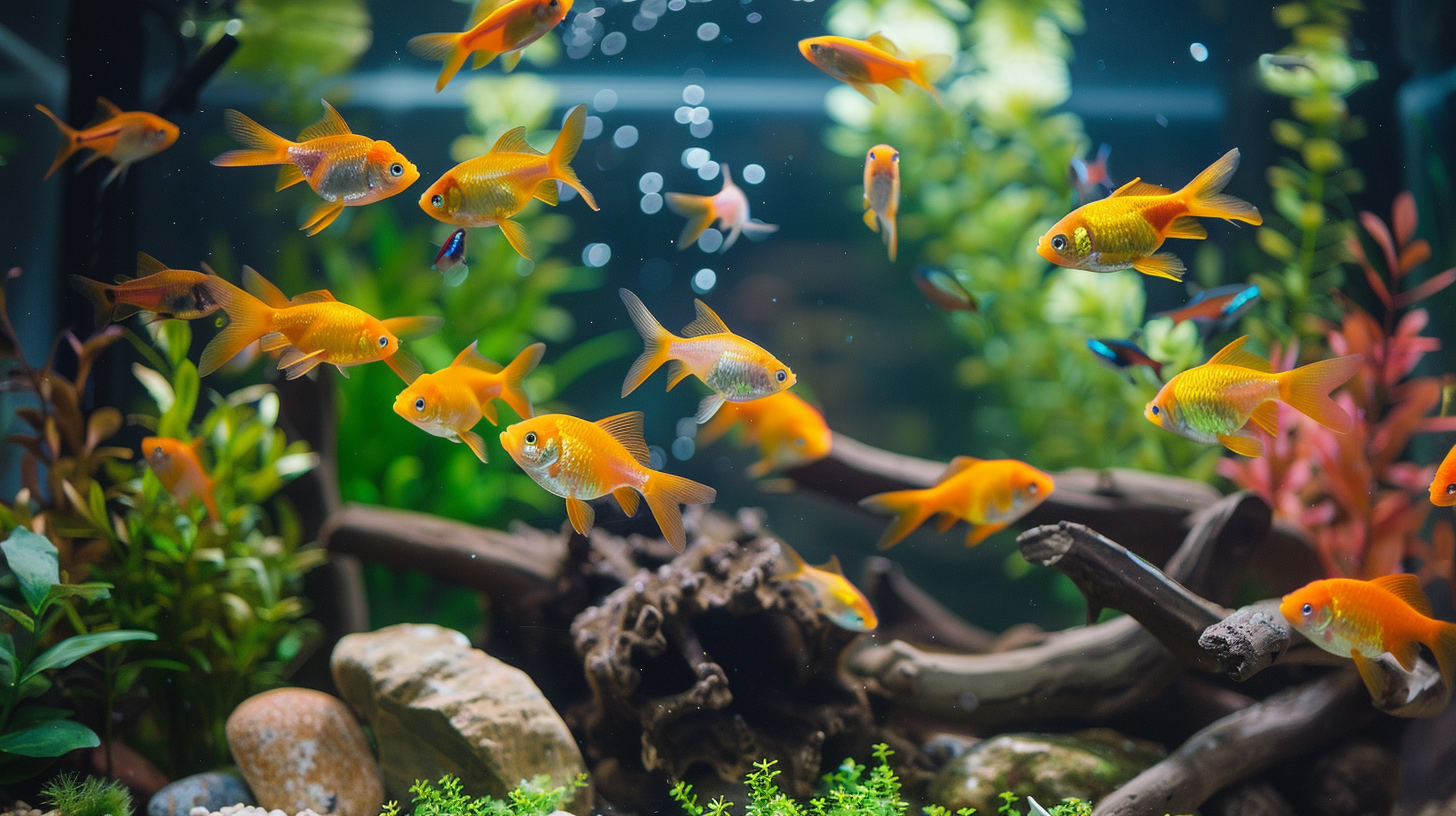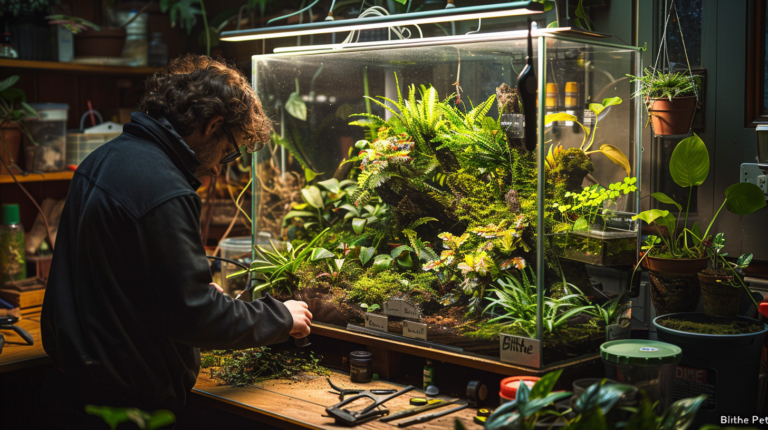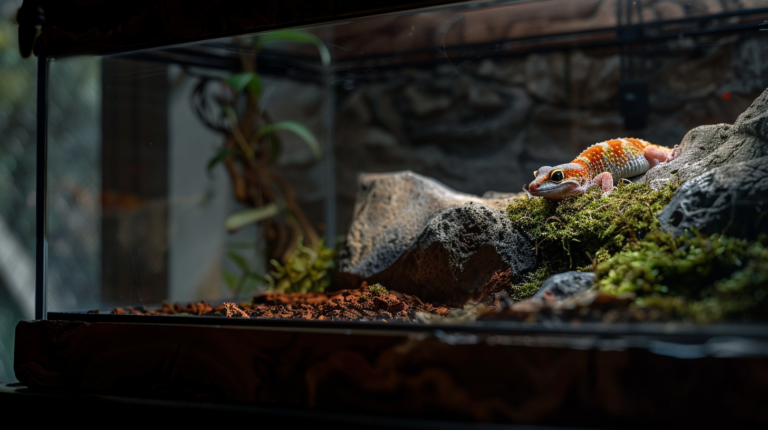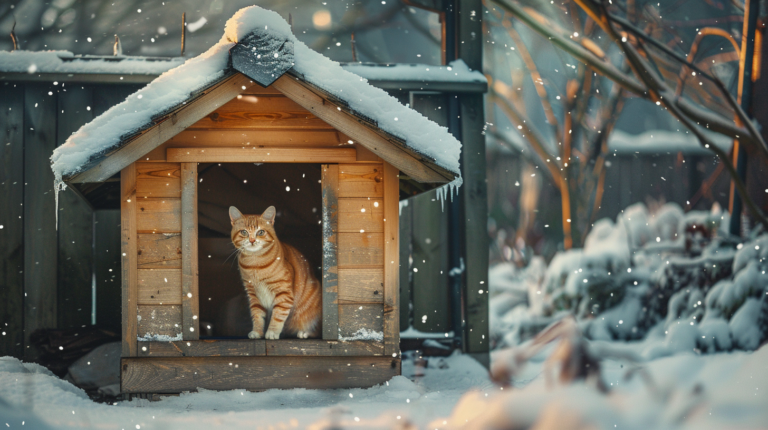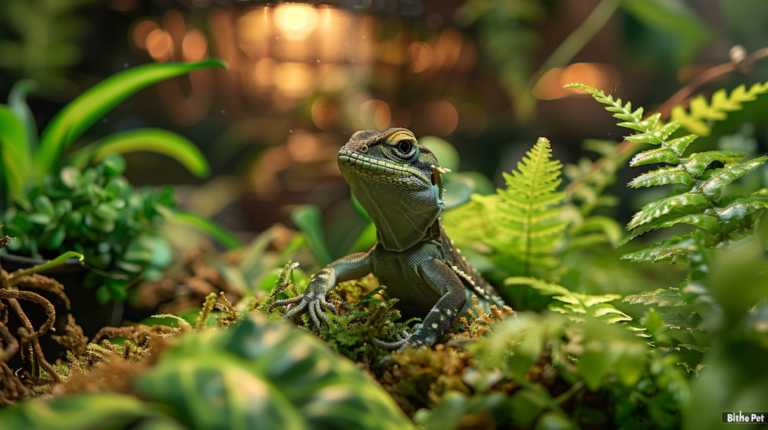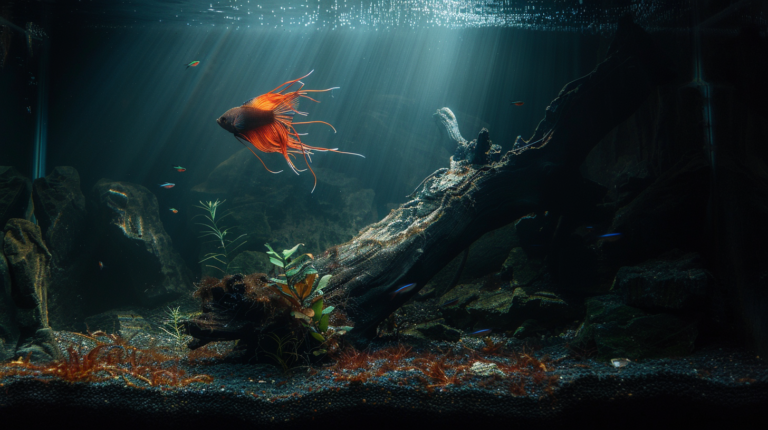Discover 5 stunning budget aquarium decor ideas that transform your tank without breaking the bank. Natural materials, DIY projects & smart hacks for beautiful results!
Table of Contents
Introduction: Making a Splash Without Breaking the Bank
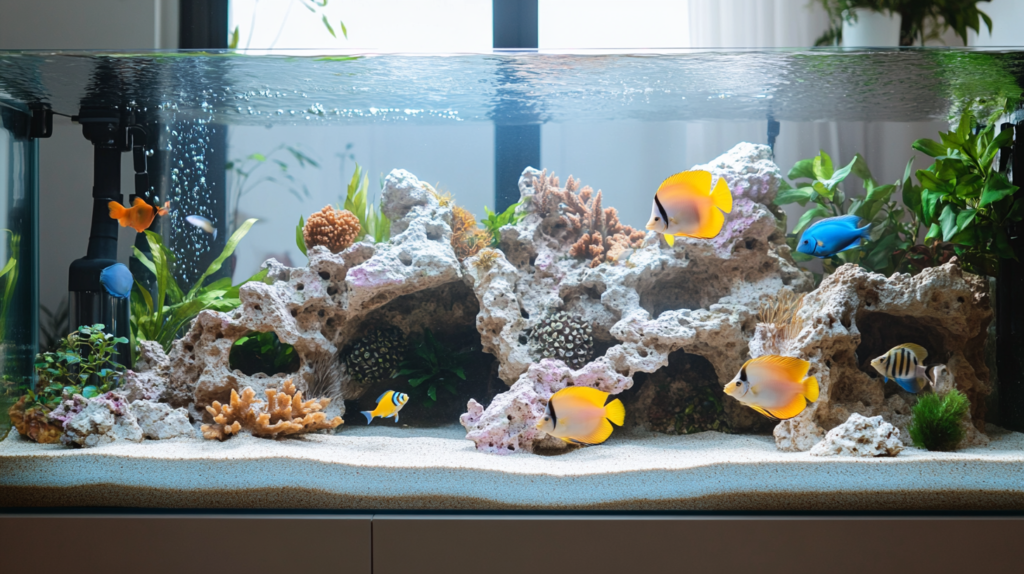
Setting up and maintaining an aquarium is a rewarding hobby that brings a slice of underwater beauty into your home. However, anyone who’s priced aquarium decorations at pet stores knows they can quickly become one of the most expensive aspects of fishkeeping. The good news? Creating a breathtaking aquatic display doesn’t require emptying your wallet. With creativity, resourcefulness, and some insider knowledge, you can transform your tank into a stunning underwater paradise while keeping your budget intact.
Whether you’re setting up your first tank or looking to refresh your existing aquascape, budget aquarium decor options abound—many superior to their expensive counterparts in both aesthetics and fish safety. This comprehensive guide explores five proven approaches to economical aquarium decorating that will make your tank shine without the premium price tag.
Beyond just saving money, many of these budget aquarium decor ideas offer customization possibilities that store-bought items simply can’t match. Let’s dive into how you can create an eye-catching aquatic environment that benefits both your fish and your finances.
Why Budget Decor Matters: More Than Just Saving Money
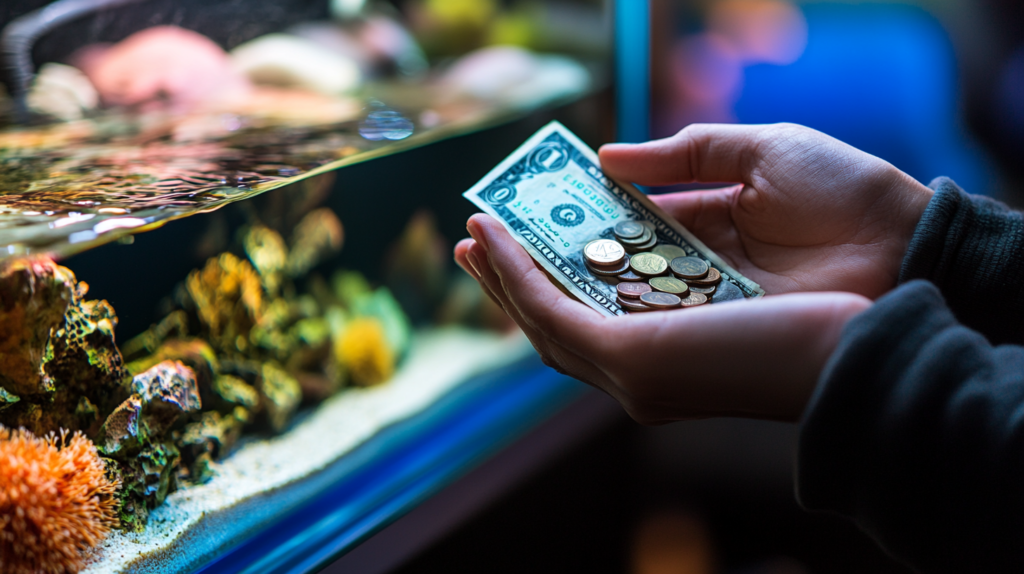
Before exploring our five spectacular budget aquarium decor ideas, let’s understand why thoughtful decoration matters for more than just visual appeal:
Benefits for Fish Health and Happiness
Proper aquarium decorations serve crucial functions beyond aesthetics:
- Stress Reduction: Fish naturally seek hiding places for security. Without adequate cover, they experience chronic stress that compromises their immune systems.
- Territory Establishment: Many fish species require defined territories to thrive. Strategic decor placement creates natural boundaries.
- Behavioral Enrichment: A well-decorated tank encourages natural behaviors like exploration and foraging, keeping fish mentally stimulated.
A study published in the Journal of Applied Aquaculture found that fish in decorated tanks showed 43% fewer stress behaviors than those in sparse environments, highlighting that decor isn’t just cosmetic—it’s essential for fish wellness.
The Environmental Impact of Budget Choices
Commercial aquarium decorations often involve:
- Plastics with questionable environmental impact
- Manufacturing processes with significant carbon footprints
- Excessive packaging waste
- Long shipping distances
Many budget aquarium decor approaches we’ll discuss utilize natural or repurposed materials, making them more sustainable choices. Your wallet isn’t the only thing that benefits when you choose budget-friendly options—the planet does too.
Now, let’s explore five fantastic budget aquarium decor approaches that deliver professional results without the professional price tag.
1. Natural Wonders: Using Found Materials as Premium Decor
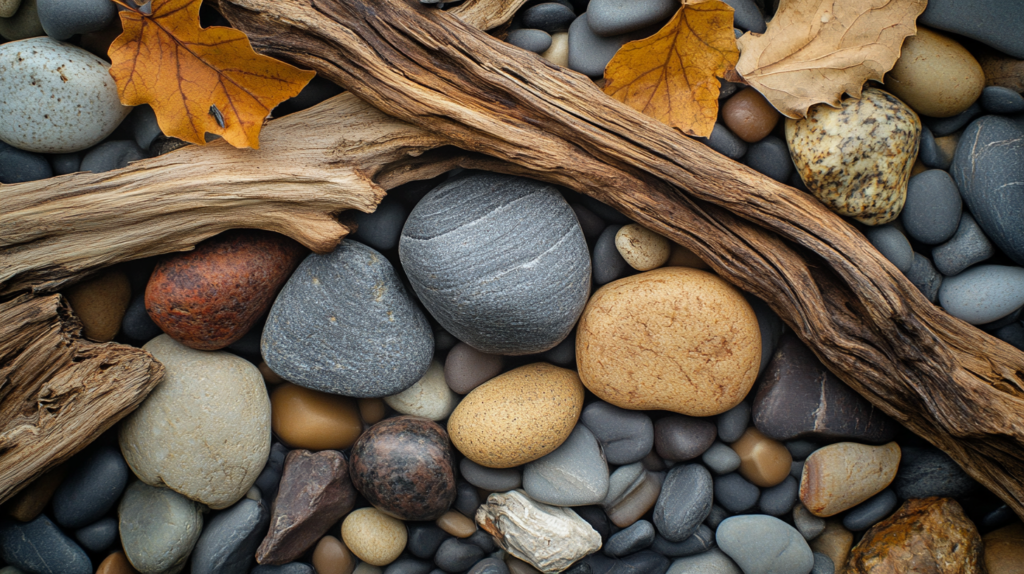
Nature provides some of the most beautiful and affordable aquarium decorations available. The key is knowing what’s safe and how to prepare these items properly.
Driftwood: Nature’s Aquarium Masterpiece
Driftwood stands as perhaps the ultimate budget aquarium decor essential. While pet stores charge $20-50 for modestly sized pieces, you can often find beautiful specimens for free along shorelines or purchase them inexpensively from non-specialty sources.
Finding and Preparing Driftwood:
- Sourcing Options:
- Beaches, lakeshores, and riverbanks (check local regulations)
- Hardware stores (often sells untreated wood at fraction of pet store prices)
- Online marketplaces with non-aquarium sellers
- Safety Preparation Process:
- Remove loose bark and debris
- Scrub thoroughly with stiff brush (no soap)
- Boil smaller pieces for 1-2 hours to sterilize and release tannins
- For larger pieces, soak in a clean container with water changes for 2-4 weeks
- Weight down if necessary (driftwood often floats initially)
Expert Tip: “The tannins released by driftwood create beneficial blackwater conditions mimicking many fish species’ natural habitats. While some hobbyists try to eliminate this tea-colored water, it actually provides antifungal and antibacterial benefits for many species.” – Dr. Elena Martínez, Aquatic Biologist
Rocks: Geological Beauty on a Budget
Rocks create instant visual impact while providing structural elements for your aquascape. While specialty aquarium rocks can cost $5-10 per pound, similar options exist for pennies or even free.
Rock Selection and Preparation:
- Safe Rock Types for Aquariums:
- Granite
- Slate
- Quartz
- Basalt
- Lava rock
- Where to Find Budget-Friendly Rocks:
- Landscape supply yards (often $0.10-0.30 per pound)
- Construction sites (with permission)
- Natural areas (check regulations)
- Non-aquarium specialty rock shops
- Preparation Protocol:
- Scrub thoroughly with stiff brush
- Perform vinegar test (drop vinegar on rock—bubbling indicates calcium content that may alter water parameters)
- Boil smaller rocks for 30 minutes or bake at 350°F for 1 hour
- Rinse thoroughly before placement
Safety Note: Always arrange rocks stably, especially in tanks with bottom-dwelling or digging fish. Unstable rock piles can collapse and potentially crack tanks or harm fish.
Natural Substrate Alternatives
Commercial aquarium gravel and sand often carry premium prices ($20+ for a small bag), but several budget alternatives provide equal or superior results:
- Play Sand:
- $5-8 for a 50lb bag at hardware stores
- Perfect for many tropical community tanks
- Rinse thoroughly before use (place in pillowcase and rinse until water runs clear)
- Black Diamond Blasting Sand:
- $10-15 for a 50lb bag at tractor supply stores
- Creates stunning dark substrate popular in professional aquascapes
- Rinse thoroughly before use
- River Pebbles:
- Often available at dollar stores or craft shops
- Creates natural-looking stream bed effect
- Verify they’re untreated before purchase
Case Study: Community aquarium hobbyist Marco Wong replaced his commercial aquarium gravel with play sand, saving over $85 on his 75-gallon tank setup while creating a more natural environment that encouraged his corydoras catfish to exhibit more natural foraging behaviors.
2. DIY Decorations: Crafting Custom Aquascapes
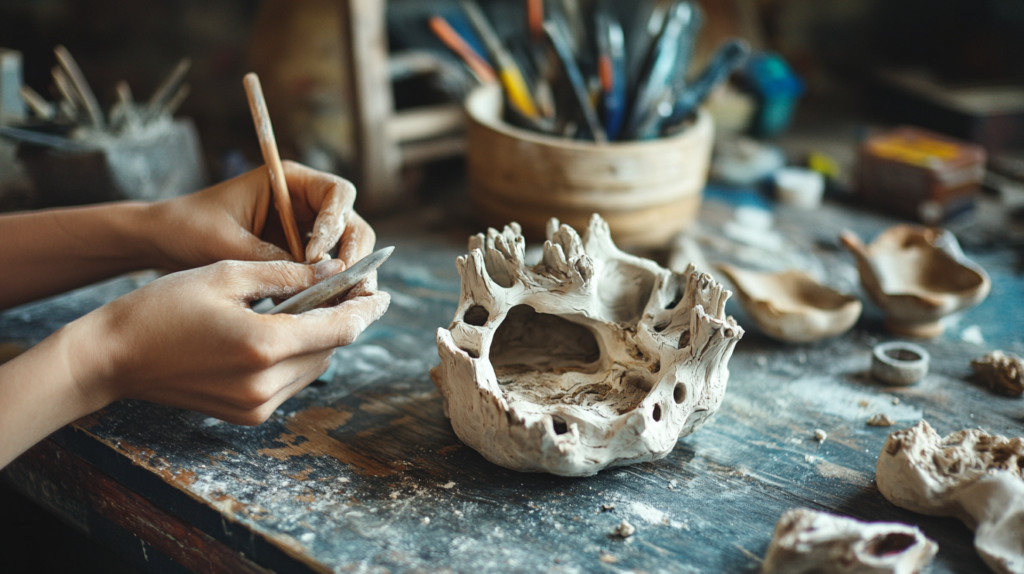
Creating your own decorations opens endless possibilities for custom aquarium decor while keeping costs minimal. Here are some proven DIY approaches that yield professional results:
Terracotta Creations: Beyond Simple Pots
Terracotta provides one of the most versatile and fish-safe materials for DIY aquarium projects:
- Cave Structures:
- Small terracotta pots ($1-3 each) create perfect hiding spots
- Chip entrance holes in the sides for multiple access points
- Stack and secure with aquarium-safe silicone for complex structures
- Terracotta Ruins:
- Break pots into sections and sand edges smooth
- Arrange as ancient ruins or rock formations
- Cost: $5-10 for an elaborate multi-piece display
- DIY Terracotta Bridge:
- Cut terracotta pot in half
- Sand all edges thoroughly
- Creates perfect arch for tank focal point
- Total cost: Under $2
Important Safety Steps:
- Use only plain, unpainted terracotta
- Soak all items for 24-48 hours before adding to tank
- Sand any sharp edges thoroughly
- Avoid items with glazes or sealants
PVC Pipe Hideaways and Structures
PVC pipe from hardware stores provides incredibly affordable aquarium decor foundations:
- Fish Cave Systems:
- 3-4″ diameter PVC pipe sections create perfect caves
- Cost: $3-5 for several feet of pipe
- Cut into 4-6″ sections for individual caves or connect for complex systems
- Advanced PVC Structures:
- Use various PVC connectors (elbows, T-joints, etc.)
- Create elaborate multi-level structures
- Cover with aquarium-safe paint or attach moss for natural look
- Disguising Techniques:
- Cover with aquarium-safe silicone and press on substrate
- Attach moss or plants with fishing line until they grow attached
- Apply thin layer of silicone and dust with fine substrate
Step-by-Step PVC Ruin Tower:
- Cut 3″ PVC pipe into three sections of different heights
- Use sandpaper to rough up outer surfaces
- Apply aquarium-safe silicone in irregular patterns
- Press fine gravel or sand into silicone while wet
- Allow to cure 48 hours before rinsing thoroughly and placing in tank
Crafted Backgrounds: 3D Depth on a Budget
Commercial 3D backgrounds can cost $100+ for larger tanks, but you can create custom versions for a fraction of the price:
- Styrofoam Background Method:
- Materials: Styrofoam sheets ($10), aquarium-safe silicone ($8), concrete ($5)
- Carve design into styrofoam using knife or hot wire
- Cover with thin layer of concrete mix
- Cure completely, soak to neutralize pH, then install
- Matala Filter Mat Background:
- Materials: Black filter mat ($15), silicone ($8)
- Cut to shape, layer for depth
- Attach with aquarium-safe silicone
- Creates perfect surface for plant attachment
Budget Background Statistics: According to a survey of 500 aquarium enthusiasts, DIY backgrounds cost an average of $25-40 compared to $120-200 for commercial options of similar size, representing an 80% cost savings while allowing complete customization.
3. Repurposed Household Items: Treasure from “Trash”
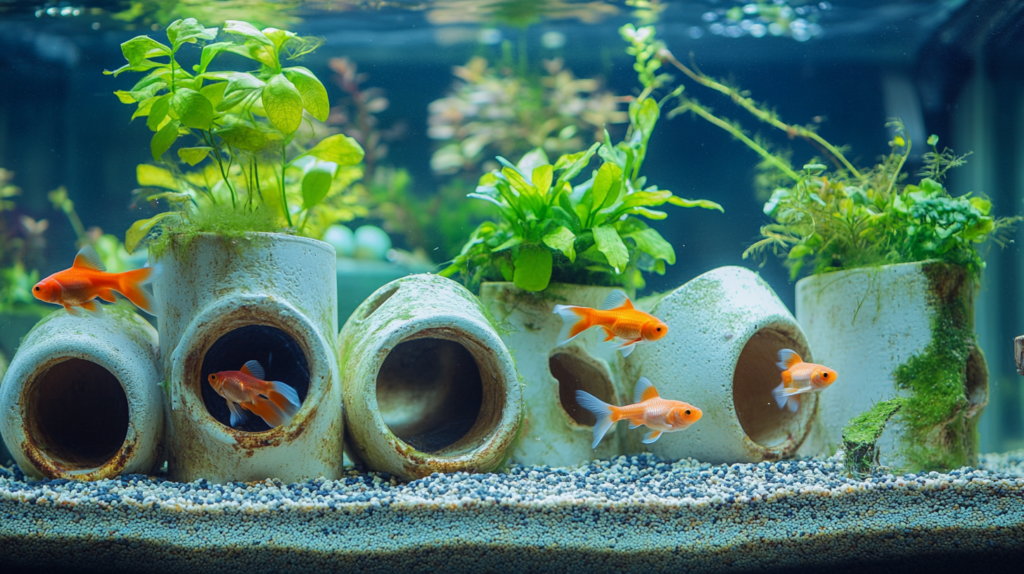
Some of the most unique and budget-friendly aquarium decorations might already be in your home. The key is knowing what’s safe and how to prepare these items properly.
Kitchen Items with Aquatic Potential
Many common kitchen items make safe, effective aquarium decorations after proper preparation:
- Ceramic Mugs and Dishes:
- Plain, unglazed ceramic mugs create perfect caves
- Decorative but unglazed ceramic dishes create interesting terrain
- Verify lead-free before using (especially for older items)
- Glass Bottles and Jars:
- Create “sunken bottle” effects
- Remove labels and adhesives completely
- Smooth any sharp edges
- Clean thoroughly using only hot water (no soap residue)
- Preparation Protocol:
- Wash thoroughly with hot water only (no soap)
- Boil for 10-15 minutes if size permits
- Soak in dechlorinated water for 24-48 hours
- Test with small water sample before full introduction
Expert Quote: “Many household items make excellent aquarium decorations, but the key is proper preparation. Anything that contained food, chemicals, or was manufactured with unknown compounds needs thorough cleaning and testing before adding to your tank.” – James Chen, Aquarium Design Specialist
Safe Construction and Craft Materials
Several building and craft materials create stunning aquarium features at minimal cost:
- Slate Tile:
- Available at hardware stores for $2-5 per square foot
- Create stacked formations, caves, or basking areas
- Split along natural lines for thinner, more manageable pieces
- Untreated Hardwood:
- Certain dense hardwoods can be safely used
- Mopani, manzanita, and oak offer good options
- Must be thoroughly dried, cleaned, and prepared
- Craft Mesh:
- Plastic canvas/craft mesh ($1-2 per sheet)
- Create custom dividers, moss walls, or breeding structures
- Use black for less visibility
Safety Checklist for Repurposed Items:
- No metallic components that could corrode
- No paints, dyes, or sealants not specifically labeled aquarium-safe
- No porous materials that could harbor bacteria or leach substances
- No sharp edges or points that could harm fish
- No items with uncertain composition or origin
Creative Containment: Beyond the Glass Box
Even the aquarium itself can be a budget-friendly repurposed item:
- Glass Containers:
- Large vases ($5-15 at thrift stores)
- Fish bowls (suitable for plants only, not fish)
- Cookie jars
- Plastic Storage Options:
- Clear plastic storage bins ($5-15)
- Perfect for breeding tanks or temporary quarantine
- Ensure food-grade plastic (HDPE, PP, or LDPE)
- Verify leach-free and BPA-free
Note: While alternative containers can work well for plants or as temporary housing, standard aquariums remain best for permanent fish habitation due to appropriate surface area for gas exchange and stable environments.
4. Budget-Friendly Live Plants: The Ultimate Natural Decor
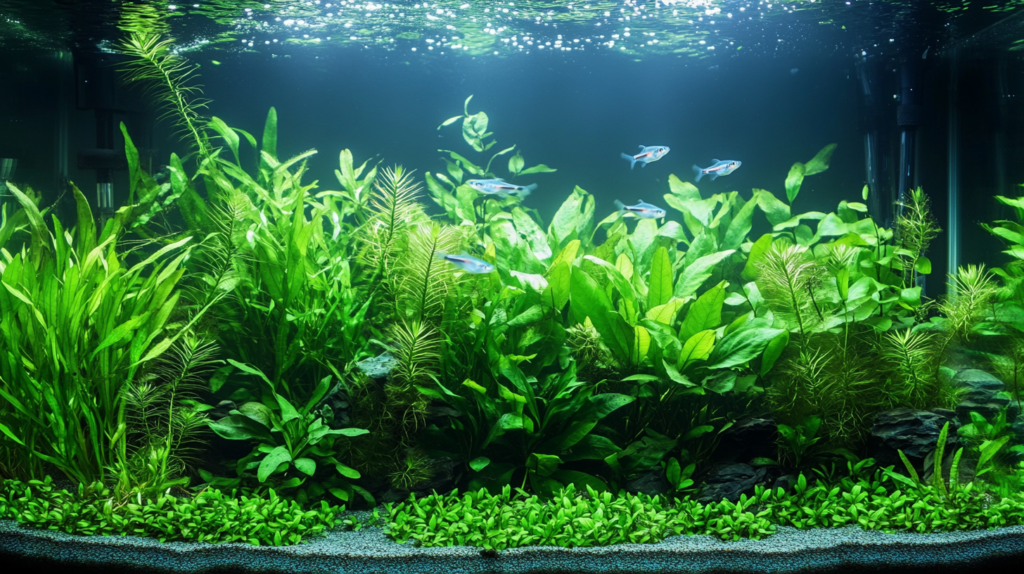
Live plants transform an ordinary tank into an extraordinary underwater landscape while improving water quality and fish health. Contrary to popular belief, live plants can be extremely budget-friendly.
No-Cost Plant Propagation
Many aquarium plants readily reproduce, allowing you to start with a small investment and expand for free:
- Stem Plant Cuttings:
- Plants like Bacopa, Rotala, and Hygrophila
- Simply trim and replant upper portions
- Original stem usually regrows from cut point
- One $5 bunch can become dozens of plants in months
- Runner-Producing Plants:
- Species like Vallisneria, Amazon Sword, and Dwarf Sagittaria
- Produce daughter plants on runners
- Separate and replant once established
- Initial $4-8 plant can produce 5-10 new plants annually
- Propagation Success Rates: According to hobbyist data, plant propagation success rates average 85-95% for most common species when basic water parameters are maintained.
Budget Plant Sources Beyond Pet Stores
Pet store aquarium plants often carry premium prices, but several alternatives offer significant savings:
- Aquarium Club Auctions and Swaps:
- Local aquarium clubs often host plant swaps or auctions
- Members sell excess plants at fraction of retail prices
- Many experienced growers give away excess plants to new members
- Online Hobbyist Markets:
- Aquaswap subreddit, Facebook aquarium groups, and forums
- Direct purchases from hobbyists with excess growth
- Often 50-70% less expensive than retail with healthier specimens
- “Tissue Culture” Budget Approach:
- Purchase tissue culture cups ($5-8)
- Each cup contains dozens of plantlets
- Separate and plant individually
- Creates instant planted look at fraction of potted plant cost
Statistical Analysis: A comparison of 25 common aquarium plant species showed average costs of $8.95 per plant at chain pet stores, $5.50 at local fish stores, and just $2.25 when purchased through hobbyist forums or clubs—a 75% savings.
Low-Tech Plant Success Stories
Many beginners avoid live plants believing they require expensive setups. These species thrive in basic setups with standard lighting:
- Java Fern (Microsorum pteropus):
- Attaches to driftwood or rocks (no substrate needed)
- Thrives in low to medium light
- Reproduces through plantlets on leaves
- Cost: $5-8 for plant that can fill large areas over time
- Anubias Varieties:
- Nearly indestructible low-light plants
- Attach to hardscape rather than planting
- Slow-growing but extremely durable
- Cost: $6-10 for plant that can last years
- Water Sprite (Ceratopteris thalictroides):
- Fast-growing floating or planted fern
- Excellent nutrient export for natural algae control
- Reproduces rapidly through daughter plants
- Cost: $4-6 for plant that can quickly multiply
Plant Benefit Snapshot: Research published in the Journal of Aquatic Ecosystem Health shows that tanks with 25%+ plant coverage experienced 63% fewer algae problems and maintained more stable water parameters between maintenance sessions compared to unplanted tanks.
5. Budget Lighting and Technical Solutions
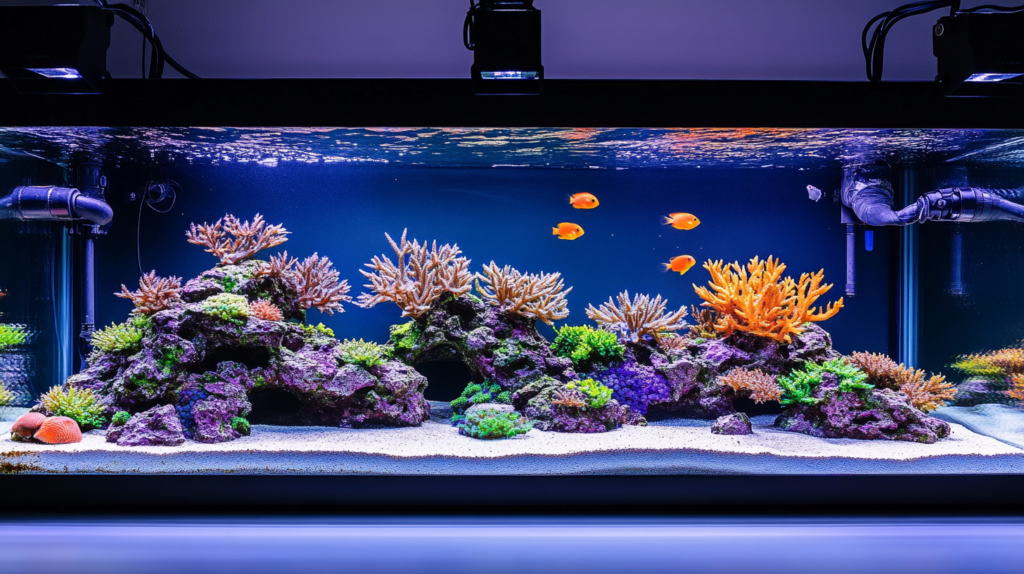
Lighting often represents one of the largest expenses in aquarium setups, but several budget approaches deliver excellent results with minimal investment.
DIY Lighting Retrofits and Enhancements
Create custom lighting solutions for a fraction of aquarium-specific products:
- Standard Lamp Conversion:
- Clamp lamps or desk lamps ($10-15)
- LED daylight bulbs (6500K) ($5-8 each)
- Create custom positioning for optimal coverage
- Total cost: $15-30 vs. $50-100+ for aquarium fixtures
- LED Strip Enhancement:
- Waterproof LED strip lights ($10-20)
- Daylight white (6500K) provides excellent plant growth
- Attach to underside of aquarium hood
- Add inexpensive timer ($5-10) for consistent photoperiod
- Smart Home Integration:
- Connect budget lights to smart plugs ($10-15)
- Program custom sunrise/sunset effects
- Control remotely via phone apps
- Total cost: Under $25 for features matching $100+ commercial systems
Lighting Comparison Test: In a controlled test comparing a DIY LED setup ($32 total cost) with a commercial aquarium light ($89), plant growth rates showed no significant difference over a 6-week period for low to medium light plant species.
Filtration Hacks and Budget Solutions
Maintain excellent water quality without premium-priced equipment:
- Sponge Filter Supremacy:
- Complete setup costs $15-25
- Provides mechanical and biological filtration
- Gentle flow ideal for breeding tanks or fry
- Easily maintained with simple rinse in tank water
- Requires only inexpensive air pump to operate
- HOB Filter Media Optimization:
- Replace expensive cartridges with cut-to-fit filter foam ($8-10 for years of use)
- Add ceramic media bags in rear compartment ($5-10)
- Significant improvement over stock media at fraction of replacement cost
- DIY Surface Skimmer:
- Cut water bottle top section
- Attach to filter intake
- Creates effective surface skimmer for protein film removal
- Cost: $0 (repurposed materials)
Budget Filtration Fact: Testing by independent aquarium enthusiasts demonstrated that DIY filter media solutions provided equal or superior filtration at approximately 15% of the cost of manufacturer replacement cartridges over a one-year period.
Algae Prevention on a Budget
Prevent algae issues without expensive chemical treatments:
- Natural Algae Control Squadron:
- Nerite snails ($2-4 each) – excellent for hard surfaces
- Amano shrimp ($3-5 each) – consume various algae types
- Otocinclus catfish ($2-4 each) – specialized for flat surfaces
- Total investment of $15-25 provides maintenance crew for years
- Strategic Lighting Control:
- Inexpensive timer ($5-10)
- Limit photoperiod to 6-8 hours
- Position tank away from direct sunlight
- Cost: Under $10 vs. $20-30 for algae treatments
- Floating Plant Light Shield:
- Duckweed, frogbit, or water lettuce ($5-8 per portion)
- Creates natural light diffusion
- Absorbs excess nutrients
- Self-replicating solution that improves over time
Budget Expertise Note: “The most effective algae control system isn’t found in bottles of chemicals but in creating balanced ecosystems. A well-planned tank with appropriate lighting, adequate plant mass, and suitable clean-up crew rarely experiences significant algae issues.” – Dr. Melissa Hoffman, Aquatic Ecology Researcher
Putting It All Together:
Designing Your Budget Masterpiece
Creating a cohesive aquascape using budget elements requires planning and thoughtful design. Here’s how to combine our budget approaches into stunning completed tanks:
Themed Budget Tank Inspirations
- Natural Riverbed Design:
- Play sand substrate ($5)
- Collected and sanitized river rocks ($0-5)
- Driftwood centerpiece ($0-10)
- Java fern and anubias attached to hardscape ($10-15)
- LED shop light with daylight bulbs ($20-25)
- Total decoration cost: $35-55
- Ancient Ruins Concept:
- Black Diamond blasting sand substrate ($10)
- DIY terracotta ruins from broken pots ($5-10)
- Vallisneria background plants ($5-8)
- Java moss for aging effect on ruins ($5)
- LED strip lighting ($15-20)
- Total decoration cost: $40-53
- Jungle Immersion Setup:
- Organic potting soil capped with gravel ($8-10)
- Stem plant package from hobbyist ($10-15)
- Repurposed manzanita branches ($0-15)
- DIY background from black foam mat ($10-15)
- Clamp lamps with LED bulbs ($20-25)
- Total decoration cost: $48-80
Visual Planning Tool: Sketch your design before purchasing materials to ensure cohesive results. Consider focal points, plant growth patterns, and fish swimming zones when planning your budget masterpiece.
Color Theory for Budget Tanks
Strategic color choices amplify visual impact without increasing costs:
- Contrast Principles:
- Dark substrates make fish colors pop (especially reds and blues)
- Light substrates enhance green plant visibility
- Select budget decorations with complementary colors to your fish
- Visual Depth Techniques:
- Smaller elements in foreground
- Larger structures in background
- Creates forced perspective that makes tanks appear larger
- Color Psychology in Aquascaping:
- Blues and greens create calm, natural environments
- Warm browns and tans emulate biotope authenticity
- Avoid bright artificial colors that detract from natural beauty
Professional Insight: “The most stunning aquascapes aren’t defined by the cost of materials but by thoughtful design principles. Understanding basic color theory and composition creates professional results regardless of budget.” – Hiroshi Takahashi, Professional Aquascaper
FAQ: Budget Aquarium Decor Questions Answered
Q: Is it safe to use items from nature in my aquarium?
A: Yes, with proper preparation. Driftwood, rocks, and certain plants can be safely collected and used after thorough cleaning and sterilization. Always verify the item won’t leach harmful substances (perform the vinegar test on rocks) and sterilize through boiling, baking, or extended soaking depending on the material.
Q: How can I create a natural-looking planted tank without CO2 or expensive lighting?
A: Focus on undemanding plant species like Anubias, Java Fern, Cryptocoryne, and floating plants. These thrive under standard LED lighting without supplemental CO2. Use organic potting soil capped with gravel for an inexpensive nutrient-rich substrate, and maintain moderate stocking levels so fish waste provides natural fertilization.
Q: What household items should never be used as aquarium decorations?
A: Avoid metals (which corrode and release toxins), painted or glazed ceramics (may contain lead), seashells or coral (alter water chemistry), treated woods, and any plastics not labeled food-safe. Also avoid items with small crevices that trap debris and any materials with unknown composition that might leach chemicals.
Q: How can I tell if a DIY decoration is safe for my aquarium?
A: After thorough cleaning, perform a simple test: Place the item in a container with dechlorinated water and test pH, ammonia, and hardness initially and after 48 hours. If parameters remain stable and there’s no unusual odor or film on the water’s surface, the item is likely safe. When in doubt, err on the side of caution.
Q: What’s the most cost-effective way to start a planted aquarium?
A: Begin with fast-propagating, beginner-friendly species purchased from other hobbyists. Plants like Water Sprite, Hygrophila, and Amazon Sword quickly multiply, allowing you to fill the tank from just a few initial specimens. Use organic potting soil capped with gravel for an inexpensive yet effective substrate, and position the tank to receive indirect natural light to supplement basic lighting.
Q: How often should I replace budget filter media versus commercial cartridges?
A: Quality budget media like polyester filter floss or foam rarely needs replacement—only rinsing in old tank water during maintenance. This contrasts with commercial cartridges designed for monthly replacement. Ceramic biological media can last indefinitely with occasional gentle rinsing. This approach saves money while providing superior filtration by preserving beneficial bacteria colonies.
Ready to Transform Your Tank? Take Action Today!
Creating a stunning aquarium doesn’t require premium prices—just imagination, planning, and the budget-friendly approaches we’ve explored. Remember that some of the most impressive tanks featured in aquascaping competitions utilize simple, natural materials that focus on design principles rather than expensive commercial products.
Start small, experimenting with one budget decor idea at a time. Take before and after photos to appreciate the transformation and share your success with fellow aquarists. You’ll likely find that your creativity produces results that outshine expensive commercial decorations while providing your aquatic friends with a more natural, enriching environment.
For more expert pet care tips and product recommendations, visit BlithePet.com — your trusted source for pet wellness.
Conclusion:
Beauty on a Budget is Possible
The world of aquarium keeping doesn’t have to drain your wallet. As we’ve explored, creating breathtaking underwater landscapes is more about creativity and understanding design principles than purchasing expensive commercial decorations. Natural materials, DIY projects, and strategic plant choices can transform an ordinary tank into an extraordinary aquatic display while keeping costs remarkably low.
Remember that budget aquarium decor often provides benefits beyond cost savings—many approaches we’ve discussed create more natural environments that better meet your fish’s biological needs. The satisfaction of creating something beautiful through your own efforts adds another dimension of enjoyment to the hobby.
Have a similar experience with your pet? Share it in the comments below!

